UK completes Antarctic Halley base relocation
- Published
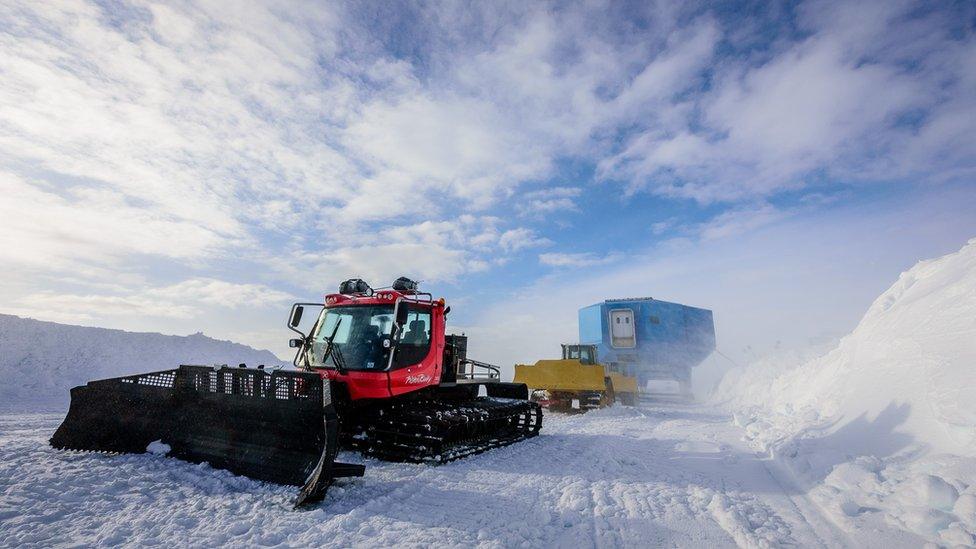
All eight modules were towed across the ice shelf to the new location further from the sea
The British Antarctic Survey (BAS) has completed the move of its Halley research station.
The base is sited on the floating - and moving - Brunt Ice Shelf, and had to be relocated or face being dumped in the ocean.
Tractors were used to tow the eight modules that make up the futuristic-looking Halley 23km further "inland".
Last month, BAS announced it would "mothball" the station for the duration of the coming Antarctic winter.
The decision was made after a new crack opened in the ice shelf.
This fissure is a long way (17km) from Halley's new position but it has prompted some concern about the stability of the whole area.
Glaciologists want more time to assess the situation, and safety considerations demand staff be withdrawn before deteriorating weather conditions and 24-hour darkness make access and egress extremely difficult.
Drone video of the new crack on the Brunt Ice Shelf
Halley's move was facilitated by its novel design.
The base has a hydraulic leg and ski system that allows it to be raised above the annual snowfall, and periodically shifted.
If these adjustments were not to happen, the station would eventually be buried and carried to the shelf edge where it would then be dropped into the ocean inside an iceberg.
Halley bases I to V were abandoned to this fate or demolished. The new design makes any adjustments easier and less labour intensive.
"The relocation has gone really well," BAS director of operations Captain Tim Stockings told BBC News.
"When you consider the big red module, which contains the general living and recreation space, weighs over 200 tonnes, I'm sure you can understand what a big exercise this is.
"And, yes, we plan it really well, but until you see these things actually move, you're always going to be a little nervous."
And the head of BAS, Prof Dame Jane Francis, added: "The relocation is a terrific achievement for our operational teams. Everyone who has worked so hard is absolutely buoyant about the success of the move."
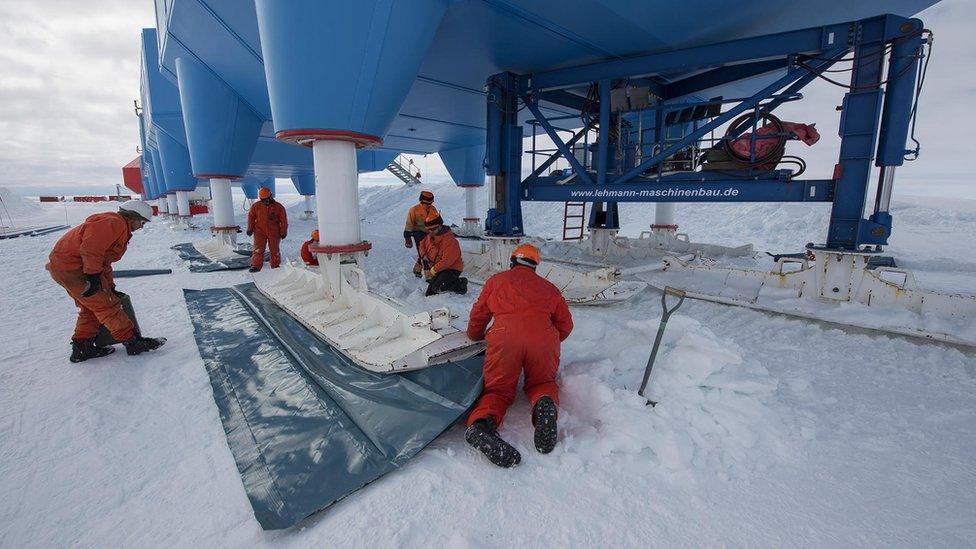
The move was made possible by a hydraulic leg and ski system
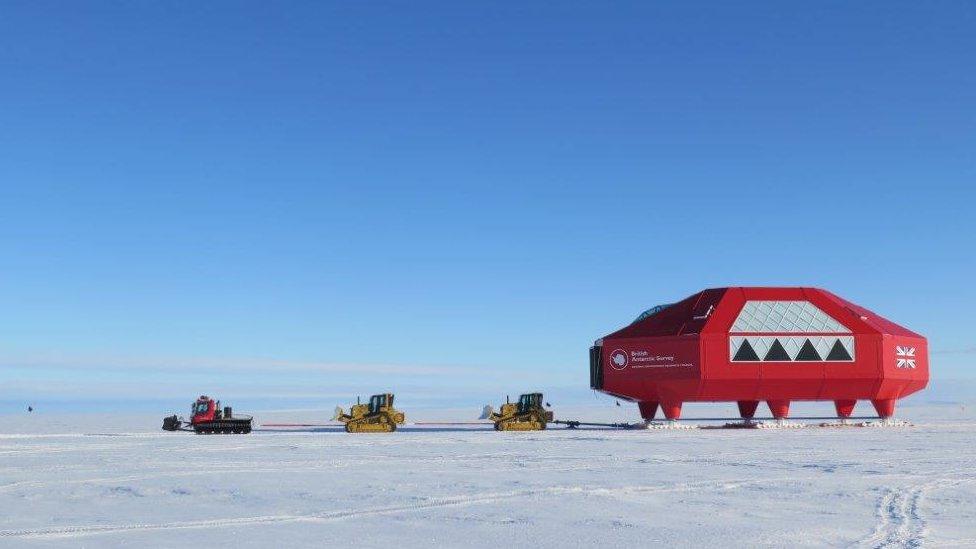
The central red module weighs over 200 tonnes
The UK has operated a research station on the 150m-thick Brunt Ice Shelf since the late 1950s.
It has two key functions. One is as a support link to deep-field exploration of the Antarctic interior. And the second - and main task - is as a centre of research itself.
Scientists at the base have an international reputation for their studies of Earth's atmosphere.
It was at Halley, for example, that a BAS-led team was able to show in 1986 that a hole had opened in the ozone layer.
Present day work also includes investigations into "space weather" - the impacts that occur when particles and magnetic fields billowing away from the Sun collide with Earth's magnetic field and upper atmosphere. Solar storms are known to disrupt the operation of satellites and can even interfere with electricity grids on the ground.

Halley base and a tale of two fissures
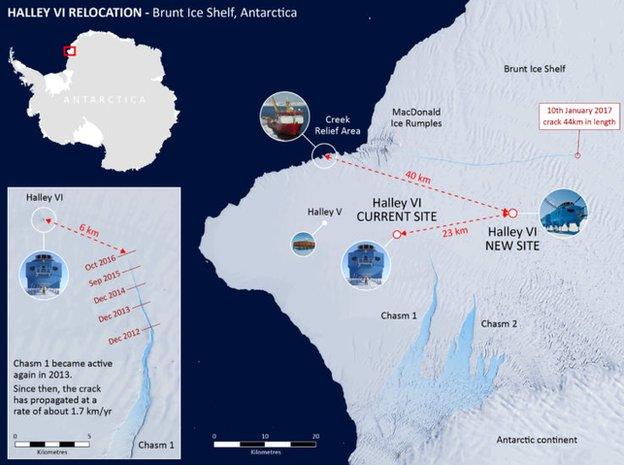
Broadly speaking, "north" is towards the top-left of this graphic
The floating Brunt Ice Shelf flows seaward at a rate of 0.4km per year
Unless Halley were moved it would eventually be lost to the ocean
An opening chasm to the west threatened to cut the base off
The just-completed relocation has put the station in a safe place
But a new crack - dubbed "Halloween Crack" - has opened to the north
It poses no immediate danger, but glaciologists need time to study it
A winter shutdown will occur at Halley while the assessment is done

BAS is now in the process of reorganising all this research to take account of the forthcoming shutdown.
Although automatic weather stations can continue to collect their data on solar and battery energy, pretty much all other experiments will have to be suspended.
Prof Richard Horne is head of the space weather and atmosphere team at BAS.
"We're going to lose some of our data streams which go into our space weather forecasting model," he told BBC News. "Fortunately, we've built that model in such a way that it's robust and we can still operate.
"So, we'll continue to issue our forecasts, but it's going to make it more difficult to interpret what's going on.
"To give you an example - just this morning we were detecting on our magnetometer at Halley two sub-storms - there's a global disruption of the Earth's magnetic field going on.
"When the power goes off, it's going to stop that kind of monitoring."
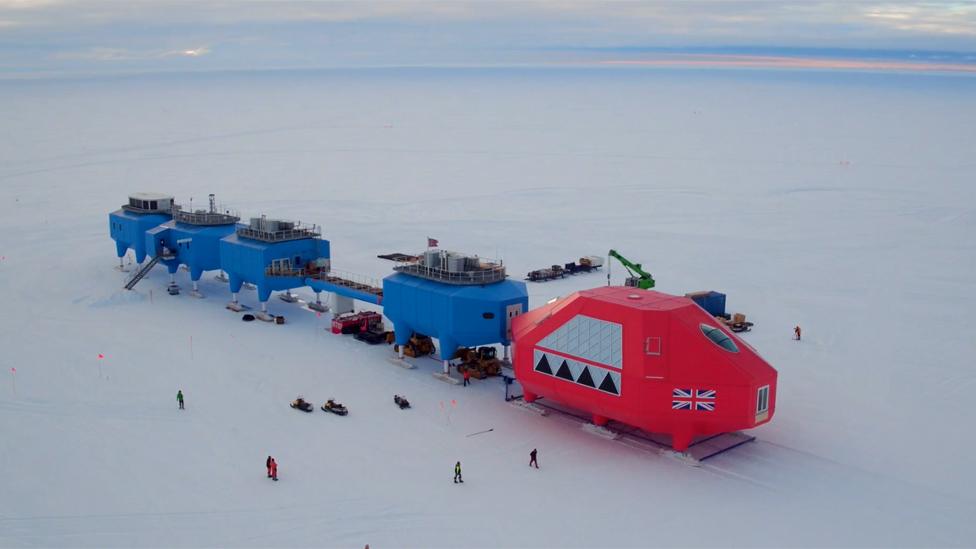
It has taken 13 weeks to get the base to its new position on the shelf
BAS is gradually winding down the base with the aim of having everyone out come March.
Summer-only staff who have assisted with the move are returning home onboard the Royal Research Ship Ernest Shackleton.
Of the 16 people who would ordinarily expect to over-winter at Halley, three will now work out of the UK's Rothera station on the Antarctic Peninsula instead.
Another individual will go to King Edward Point station on South Georgia.
All the others will come back to BAS HQ in Cambridge.
Halley will be re-opened in November - the start of the next summer season.
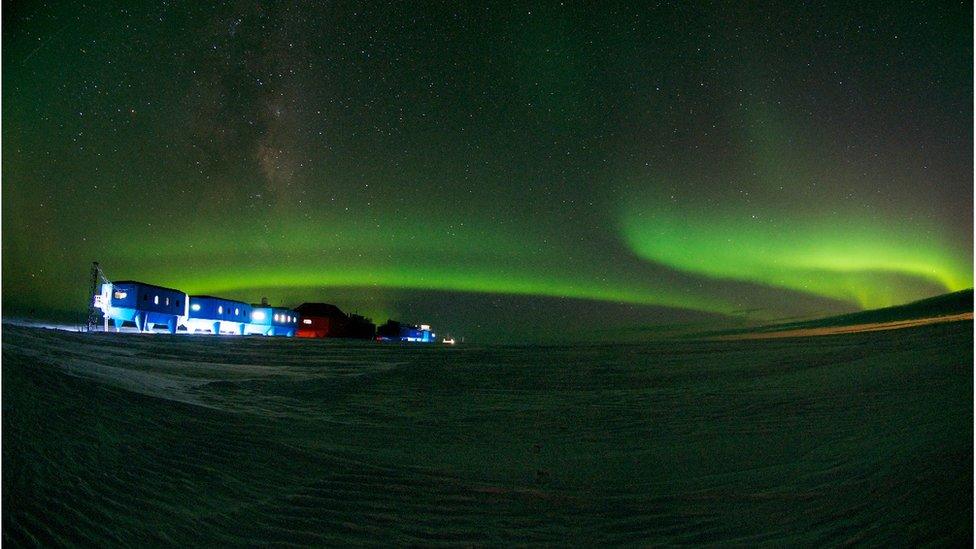
Aurora: Halley base has become a centre for the study of space weather
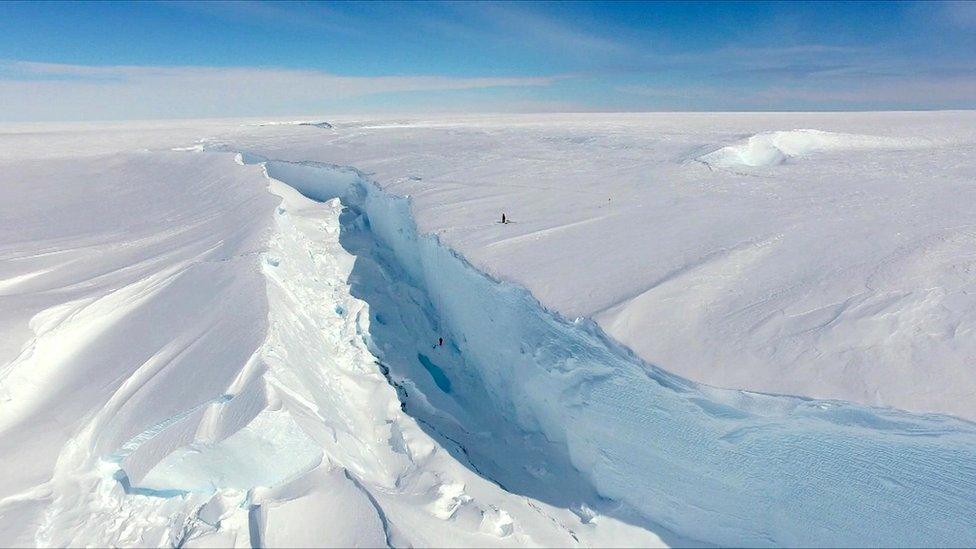
The chasm to the west prompted the move but it is not the reason for the winter shutdown
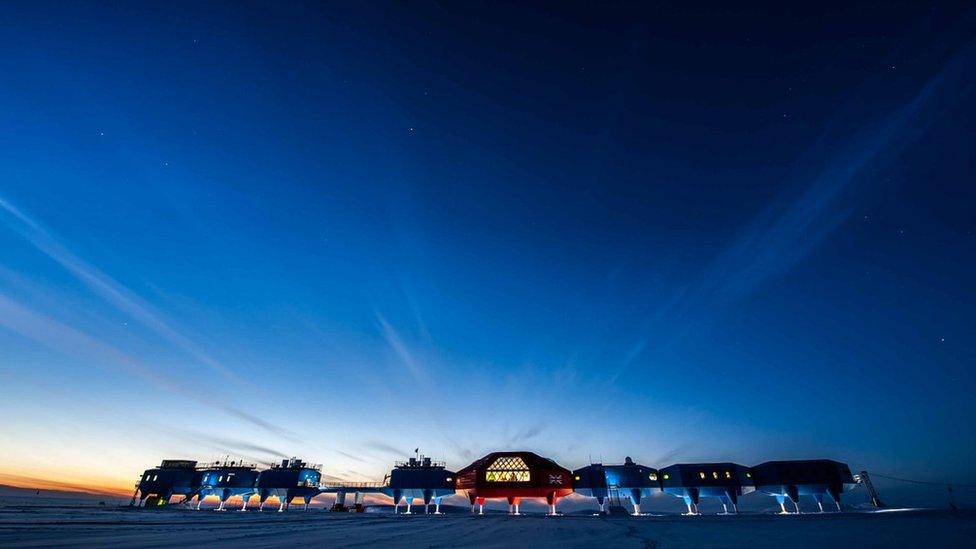
Jonathan.Amos-INTERNET@bbc.co.uk, external and follow me on Twitter: @BBCAmos, external
- Published16 January 2017
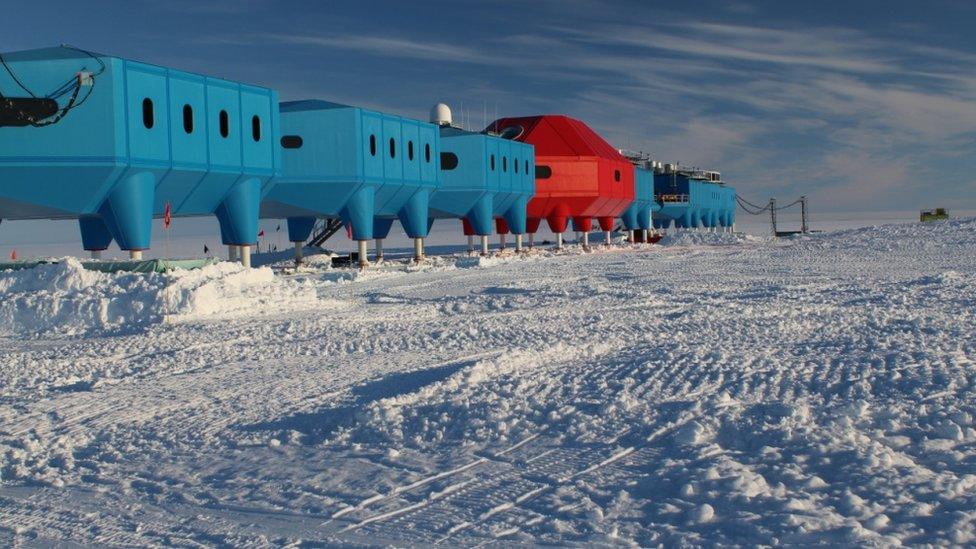
- Published13 January 2017

- Attribution
- Published4 May 2016
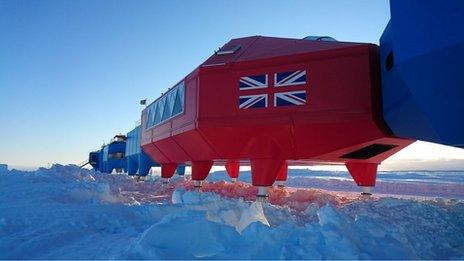
- Published4 May 2016
